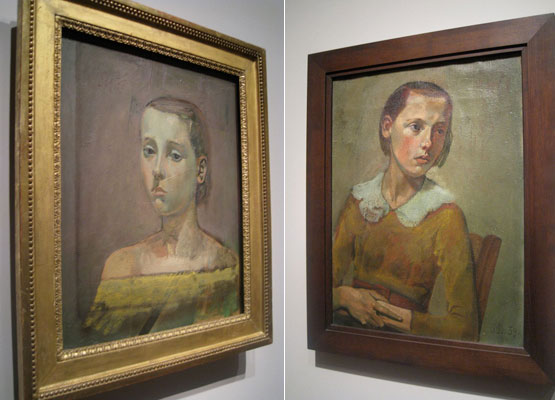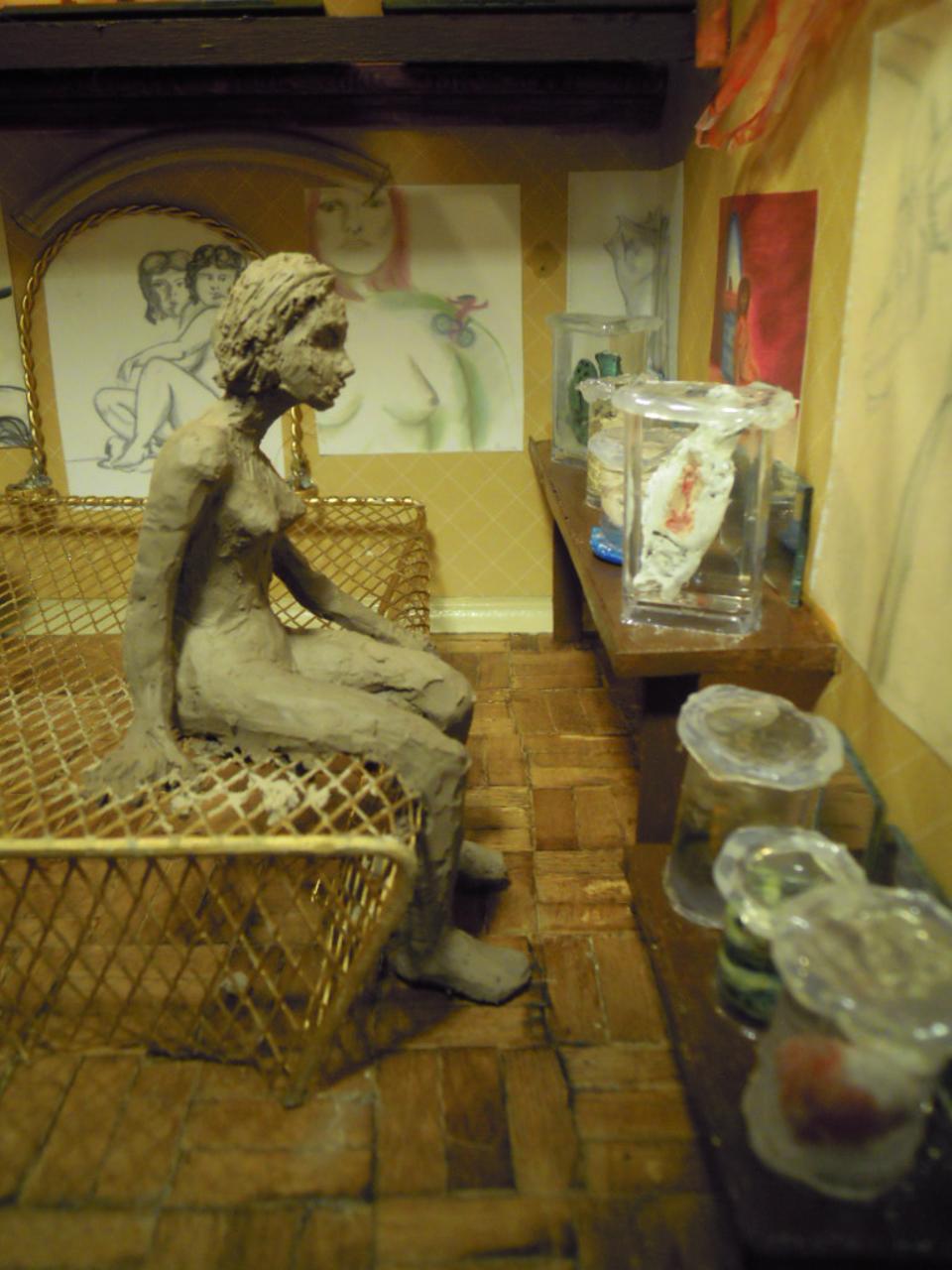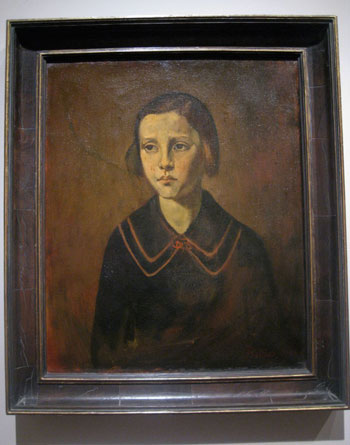And here is the Met's response: “Moments such as this provide an opportunity for conversation, and visual art is one of the most significant means we have for reflecting on both the past and the present, and encouraging the continuing evolution of existing culture through informed discussion and respect for creative expression.”
And here is my response: "Oh, for f*** sake." Literally.
Here's the thing...
There was a real Thérese. Her name was Thérese Blanchard, and she was eleven years old in 1936, when she had the misfortune to catch the eye of her Parisian neighbor, Balthus. She was the daughter of a restaurant worker, and her family may have welcomed, or even needed, the extra income to be had from modeling. In any event, Therese posed for Balthus for the next three years. He made ten paintings of her. The art world considers them his finest work.
 These are Balthus portraits of Thérèse from 1938 and 1939, respectively. She would have been 13 and 14. No, I'm not going to post "Thérèse Dreaming."
These are Balthus portraits of Thérèse from 1938 and 1939, respectively. She would have been 13 and 14. No, I'm not going to post "Thérèse Dreaming." Non-consensual voyeurism is a form of sexual abuse, and a twelve-year-old child is not of age to give consent to exposing herself in her underwear to a painter. Repeated non-consensual voyeurism constitutes stalking. Thérèse Dreaming is actually evidence of a crime—documentation of the crime scene. And, yes, harm is happening. The child is being objectivized, fetishized. In posing, she is being compelled to participate. What is happening to her is a violation of her personhood and of her rights to privacy.
 Larry Rivers and his victim, daughter Emma.
Larry Rivers and his victim, daughter Emma. Seven years ago, the art world was very unclear about a film by Larry Rivers titled “Growing.” The film had been part of an archive of his work belonging to the Larry Rivers Foundation, but in 1910, it was just sold, with the archive, to New York University.
“Growing” was a film in which Rivers filmed his daughters every six months over a period of at least five years. According to one of his daughters, when she objected at the time, he called her “uptight” and “a bad daughter.” When she confronted him as a teenagers, he gave the justification that his “intellectual development had been arrested.”
 In 2016, Emma Rivers, showed a series of dollhouse sculptures depicting her childhood memories... the "Stage Set" series.
In 2016, Emma Rivers, showed a series of dollhouse sculptures depicting her childhood memories... the "Stage Set" series. Initially, New York University refused the now-adult daughters’ request that the film be destroyed. They did agree to restrict access to the film for the lifetime of the women, insisting that “Growing” was the work of a great artists and not child pornography. The public did not agree, and the story went viral. In the end, NYU did not want the controversy, and they returned the film to the Larry Rivers Foundation. The Foundation has said they will never allow the film to be shown publicly.
The simple fact is, “Growing” is child pornography, and it is illegal to buy it or to own it. This is a film where the father’s voice is heard telling his reluctant daughters to take off their clothes. The camera zooms in on the breasts or the genitalia, while the father asks prurient questions about their boyfriends and comments on the changes in their bodies. The filming began, like Balthus’ paintings of Thérèse, when one of the subjects was eleven.
 Bathus' portrait of his colleague Andre Derain. Also 1936.
Bathus' portrait of his colleague Andre Derain. Also 1936. I propose that childhood be recognized as a sovereign state, and that children be treated as the indigenous populations of a world colonized by adults.
Most folks don’t want to think of children that way, because most of us don’t want to consider how many children are living as captives, how the socialization of the child is really about her colonization. It’s easy for us not to think about children this way, because they do not have a voice, a movement, a lobby, a dime—and they never will. Children do not have a language specific to their experience with which to frame a paradigm of their sovereignty. And that lack of language is one of the most priceless aspects of their culture. It is a culture of astounding plasticity, adaptability. It is a culture of magic, of naiveté, of gullibility, of heartbreaking innocence and spontaneity… and nearly endless opportunities for exploitation.
 Cultural restitution of artwork stolen by the Nazis.
Cultural restitution of artwork stolen by the Nazis. “Cultural restitution” also refers to art and artifacts taken from indigenous cultures to be housed in museums or historical collections. Skeletons and burial artifacts are being returned to the tribes from whom they were taken by archeologists. There is an acknowledgement that a sovereign people have a right to their history and their culture, and that it is a violation of the sovereignty for another people, even a conquering one, to appropriate the artifacts of that history or culture.
This obscene film by Larry Rivers was an artifact of his daughters’ raided and stolen childhoods. It was never his to bequeath, and it had no place in the archive passed on to the Larry Rivers Foundation, and New York University had no right to acquire it. It belonged to the daughters.
 Thérèse Blanchard by her perpetrator.
Thérèse Blanchard by her perpetrator. Children have a right to their lives, to their experience, to their privacy. And when a colonizing, predatory adult invades this world, exploiting and monetizing their vulnerability and raiding their innocence in the name of “art,” children should have the right of an indigenous people to claim the artifact that bears witness to their invasion and colonization. And if the child victims are no longer here to stake that claim, then we should make sure that these crime-scene artifacts, no matter how "tasteful" or "masterful" the execution, will never be revered as works of art.


 RSS Feed
RSS Feed
